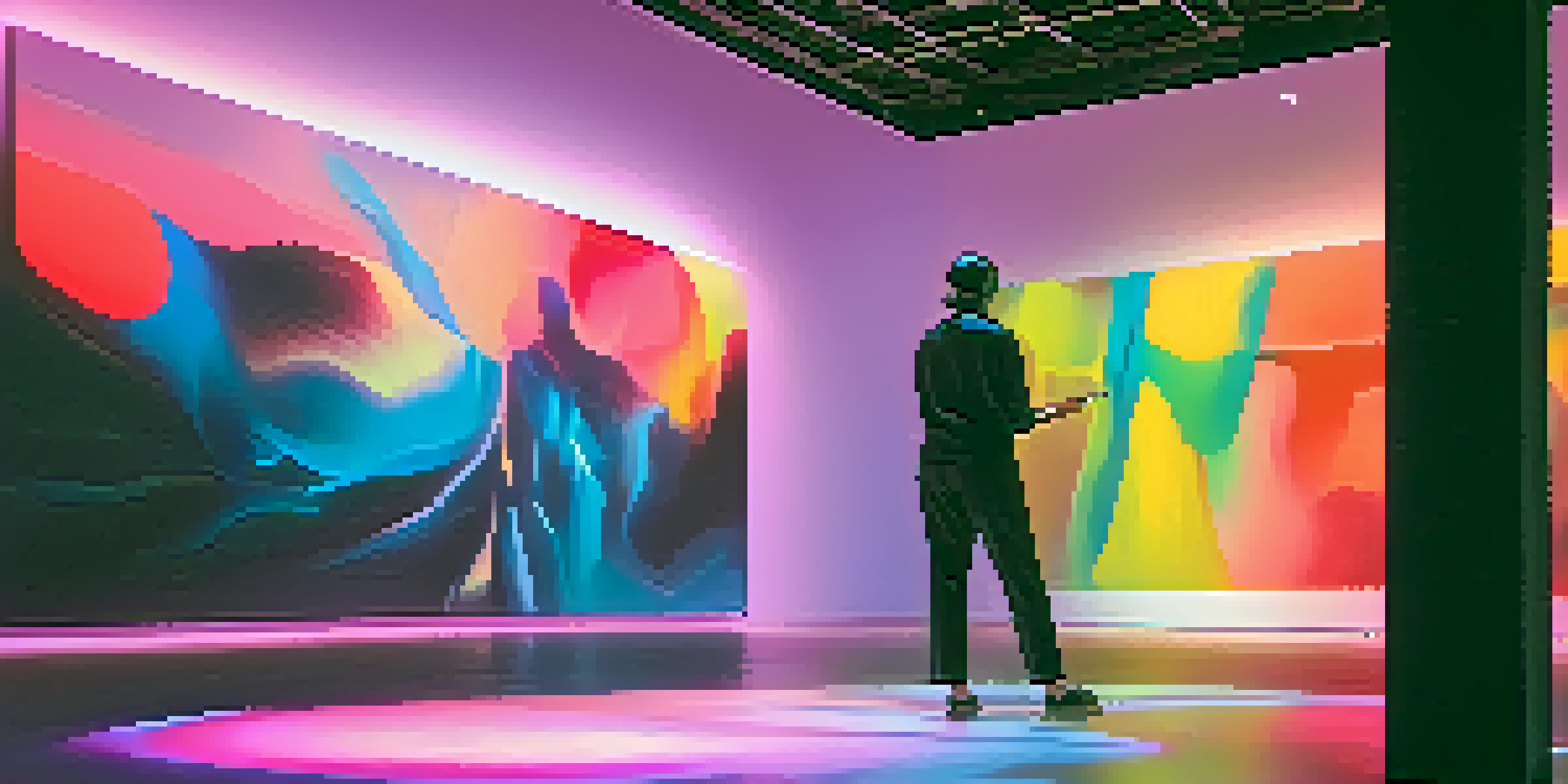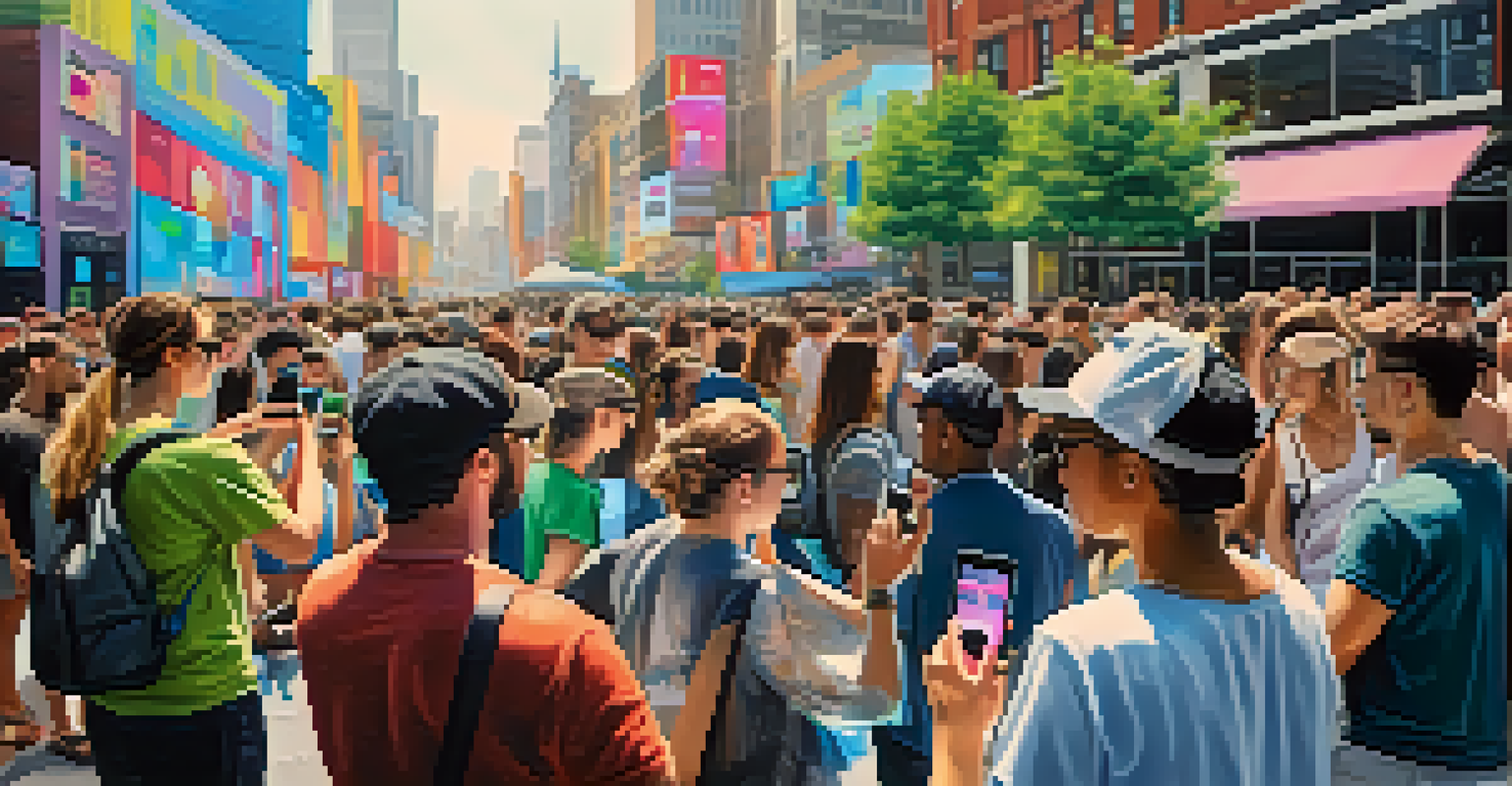The Impact of Technology on Contemporary Performance Art

Defining Contemporary Performance Art in a Digital Age
Contemporary performance art blends various forms of expression, including theater, dance, and visual art. In today's digital landscape, these performances are increasingly intertwined with technology, allowing artists to explore new dimensions of creativity. This fusion not only broadens the scope of what performance art can be but also challenges traditional boundaries.
Art is the most beautiful of all lies; it is a way of creating a world that we can understand and feel a part of.
For instance, artists might incorporate video projections, interactive installations, or live streaming to engage audiences in unprecedented ways. This digital integration invites viewers to participate in the artwork, blurring the lines between observer and creator. Such an approach not only enhances the experience but also pushes the narrative of performance art into exciting territories.
As we navigate through this digital era, it becomes essential to understand how contemporary performance art is evolving. The impact of technology on this genre is profound, prompting artists to rethink their methods and messages while also addressing contemporary societal issues.
The Role of Digital Media in Performance Art
Digital media has revolutionized how artists create and share their work. From social media platforms to high-definition video, digital tools allow artists to reach wider audiences beyond the confines of traditional venues. This accessibility has democratized art, inviting diverse voices into the conversation and fostering a more inclusive artistic community.

For example, artists can livestream performances, enabling participation from audiences around the globe. This not only expands the reach of the artist but also cultivates a sense of community among viewers who may not have had the opportunity to attend in person. The immediacy of digital media also allows for real-time feedback and interaction, creating a dynamic dialogue between artist and audience.
Digital Media Expands Art Accessibility
Digital platforms allow artists to reach wider audiences, fostering a more inclusive artistic community.
Moreover, the integration of digital media challenges artists to think critically about their content. They must consider how their work is perceived in an online space, where context can shift dramatically based on platform and presentation.
Interactive Technology: Engaging Audiences in New Ways
Interactive technology has transformed passive spectators into active participants in performance art. Through tools like augmented reality (AR) and virtual reality (VR), audiences can immerse themselves in the artwork, creating a multi-dimensional experience. This shift invites viewers to explore narratives and themes on a personal level, enhancing emotional engagement.
The technology we use affects the way we think and the way we create art.
Consider a performance where audience members can manipulate digital elements using their smartphones. This interaction not only personalizes the experience but also fosters a collaborative spirit. By engaging with the art, audiences become integral to the performance, fundamentally altering its interpretation and impact.
As artists experiment with these technologies, they can create performances that adapt and evolve in real-time based on audience input. This adaptability encourages a deeper connection, making each performance unique to the participants involved.
Challenges of Integrating Technology in Performance Art
While technology offers exciting possibilities, it also presents challenges for performance artists. Technical glitches can disrupt a carefully crafted piece, leading to frustration for both artists and audiences. Furthermore, reliance on technology raises questions about authenticity and the essence of live performance.
For instance, a performance that heavily depends on digital elements may risk overshadowing the human aspect of art. Audiences might find themselves more captivated by the technology than the message being conveyed. This challenge forces artists to strike a delicate balance between innovation and preserving the core of their artistic vision.
Interactive Tech Engages Audiences
Technologies like AR and VR invite audiences to actively participate in performances, enhancing emotional connections.
Additionally, the rapid pace of technological advancement can leave some artists feeling overwhelmed. Keeping up with trends and mastering new tools demands time, energy, and resources that may not be accessible to everyone, particularly emerging artists.
The Influence of Social Media on Performance Art
Social media has become an essential tool for performance artists, enabling them to promote their work and connect with audiences. Platforms like Instagram and TikTok allow artists to showcase snippets of their performances, generating buzz and attracting viewers. This immediate feedback can be invaluable, helping artists gauge public interest and refine their craft.
Moreover, social media fosters a sense of community among artists and audiences, allowing for shared experiences and conversations around performances. Artists can engage with followers directly, creating a loyal fanbase that feels connected to their journey. This relationship can lead to increased attendance at live events and greater support for future projects.
However, this reliance on social media also poses challenges. The pressure to maintain an online presence can detract from the artistic process, pushing artists to prioritize marketing over creativity. Striking a balance between promoting their work and staying true to their artistic vision is a continuous struggle in this digital age.
The Evolution of Performance Spaces Through Technology
Technology has not only impacted how performances are created but also where they occur. Traditional performance spaces are being supplemented or even replaced by virtual venues, allowing artists to reach audiences in innovative ways. This shift opens up a world of possibilities, from immersive installations in unexpected locations to fully virtual performances accessible from anywhere.
For example, the rise of virtual reality art spaces enables audiences to explore performances in a fully immersive environment. Viewers can navigate the space, interact with elements, and experience the artwork from various angles. This evolution redefines the conventional stage, inviting artists to experiment with unconventional settings and formats.
Social Media Shapes Artistic Community
Social media enables artists to promote their work and engage directly with audiences, building a loyal fanbase.
As artists embrace these new spaces, they also challenge the notion of what constitutes a performance venue. The digital realm encourages a more fluid understanding of audience engagement, expanding the idea of 'place' in performance art.
Future Trends in Technology and Performance Art
Looking ahead, the relationship between technology and performance art will likely continue to evolve in exciting ways. Advancements in artificial intelligence (AI), machine learning, and immersive technologies promise to create even more interactive and personalized experiences. Artists may use AI to generate real-time visuals or sounds, transforming performances into unique, ever-changing works of art.
Furthermore, as technology becomes more accessible, we can expect to see a wider range of voices in the performance art scene. Emerging artists will have the tools to experiment and innovate, leading to fresh perspectives and diverse narratives that reflect contemporary society. This inclusivity is crucial for the growth of the art form.

Ultimately, the future of performance art lies in its ability to adapt to technological advancements while remaining rooted in the human experience. As artists navigate this landscape, they will continue to redefine the boundaries of performance, ensuring that art remains a vital and relevant expression of our times.